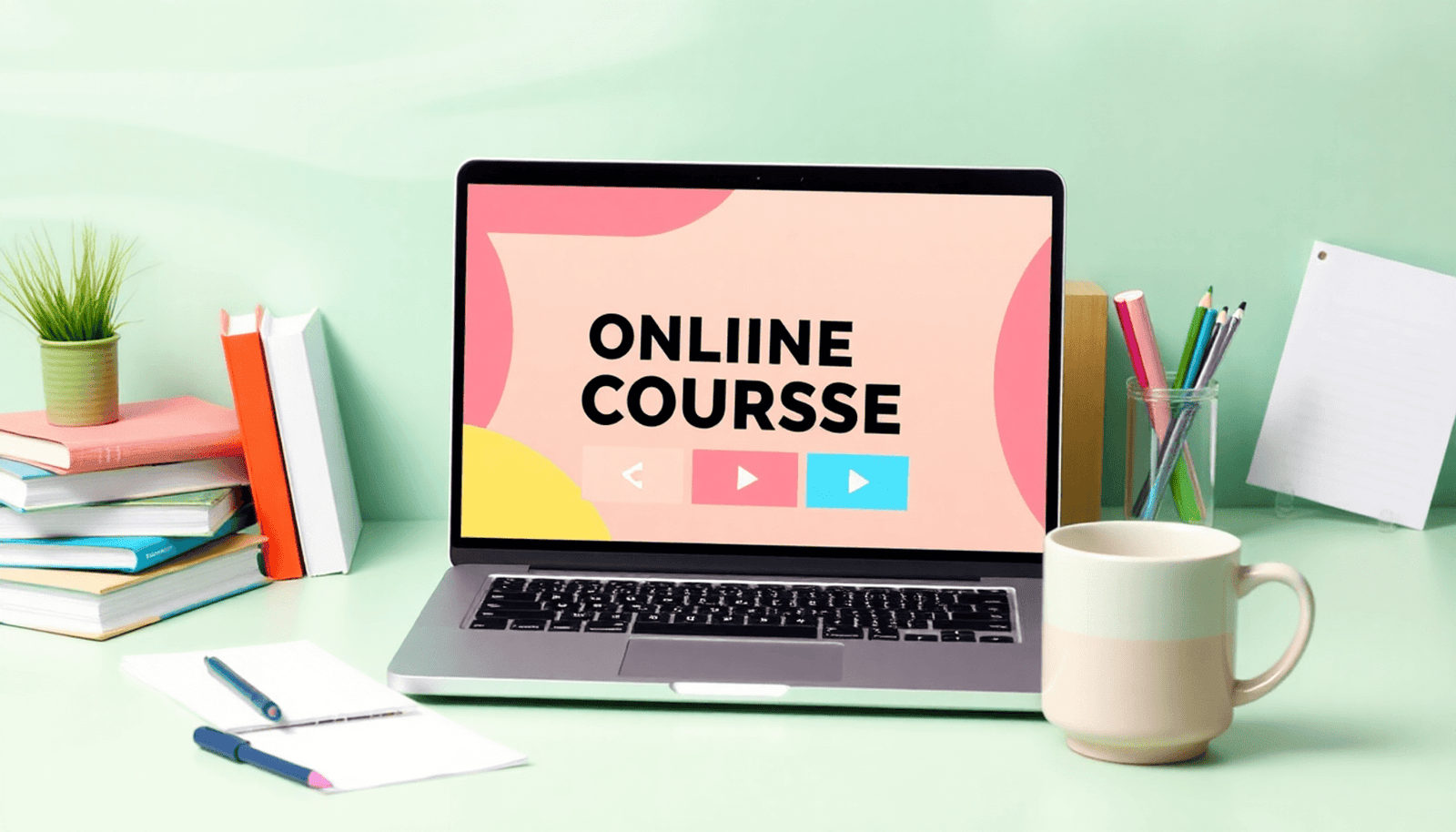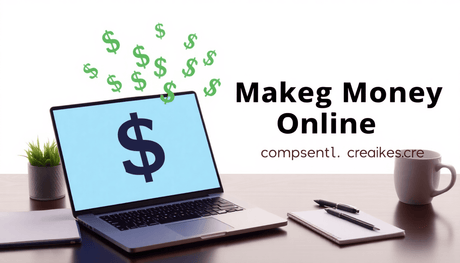Selling online courses without recording videos is a viable option for those with no video skills. This approach opens doors for educators and entrepreneurs who wish to share their knowledge without the need for on-camera presence. Accessibility in course creation is crucial, allowing a broader audience to benefit from your content.
In this blog post, you will learn:
- How to leverage Private Label Rights (PLR) courses.
- Techniques for creating engaging courses without video recordings.
- Strategies for efficient editing and production workflows.
- Various formats for delivering content effectively.
- Marketing strategies tailored to non-video based courses.
- Best practices for utilizing platforms like Uthena for selling your courses.
Embrace the opportunity to create impactful online courses that speak to your unique expertise. For instance, you could create a course on Internet of Things hacking, which includes theory, hacking tools and scenarios to level up cyber security and ethical hacking careers. Alternatively, you might consider developing a course on building an Employee Attendance System with Flutter & Supabase, or even creating a Multiplayer TicTacToe Game using Flutter, Socket and MongoDB.
You could also explore topics such as the new features of Google Apps Script IDE or provide insights into practical audit standards in your course about Auditing and Assurance. The possibilities are endless!
Understanding PLR Courses
Definition of PLR Courses
PLR stands for Private Label Rights, which grants you the ability to purchase and modify course content as if it were your own. This means you can resell these courses under your brand, customize them to suit your audience, or simply use them as a foundation for your educational offerings.
Benefits of Using PLR Courses
Utilizing PLR courses offers several advantages for entrepreneurs and educators:
- Time-Saving: Pre-made content allows you to bypass the lengthy process of course creation.
- Cost-Effective: Purchasing PLR courses is often more affordable than producing original content from scratch.
- Quality Content: Many PLR courses are crafted by industry professionals, ensuring high-quality material that resonates with learners. For instance, Uthena offers high-quality PLR video courses like Become Smarter which covers a wide range of topics including emotional intelligence and logic.
- Customization Flexibility: You can tweak and adapt the courses to fit your unique teaching style and audience needs.
Overview of Uthena
Uthena is a prominent platform specializing in whitelabel course options. It offers a vast library of high-quality PLR video courses, allowing users to easily access ready-made educational materials. With Uthena, you can select courses that align with your expertise and target market, making it an ideal resource for anyone looking to dive into online education without extensive video production skills. Some notable courses include International Negotiation Skills for mastering global persuasion strategies, Microsoft Excel Pro Beginner for those starting their Excel journey, and Amazon SEO Sales & Ads which helps in dominating Amazon eCommerce sales.
Creating Courses Without Video Recording
Creating effective online courses without video presence is entirely feasible and can be highly engaging. Here are some techniques to consider:
1. Screen Recording
Utilize screen recording tools like Camtasia or OBS Studio to capture presentations, tutorials, or demonstrations. You can create a compelling visual narrative by showcasing slides, software applications, or websites while you explain concepts in real-time.
2. Slide Presentations
Tools such as PowerPoint or Google Slides allow you to design visually appealing presentations. Integrate various media elements like images, charts, and infographics to enhance understanding and retention of information.
3. Voiceovers
Incorporating voiceovers adds a personal touch to your course content. Use a quality microphone for clear audio. Consider scripting your narration to ensure clarity and flow. A well-paced voiceover can guide learners through the material seamlessly.
By leveraging these techniques, you can deliver high-quality educational experiences without ever appearing on camera. This approach not only reduces the pressure of being on-screen but also caters to learners who may prefer auditory or visual formats over video. Emphasizing clear communication through audio and visuals will resonate with your audience and enhance their learning journey.
Moreover, incorporating offline marketing strategies into your course promotion can help reach a wider audience. You can also explore the use of affiliate sales funnels and landing pages for driving traffic effectively.
Additionally, understanding technical SEO and how to implement rich snippets can significantly improve your course's online visibility. Lastly, if your course content involves web development, mastering Dynamic JavaScript can enhance the interactivity of your course materials.
Editing and Production Efficiency
Creating online courses without appearing on camera significantly enhances editing ease. The absence of video footage eliminates the need for complex editing techniques associated with on-camera presentations. Here’s how you can streamline your editing process:
Streamlining Your Editing Process
- Focus on Audio Quality: With no visual distractions, you can prioritize audio clarity. Invest in a good microphone and ensure your voiceovers are crisp and engaging.
- Simple Visuals: Utilize slides and graphics that reinforce your content. Tools like Canva or PowerPoint allow you to create visually appealing materials without extensive video production.
- Efficient Software: Use user-friendly editing software such as Camtasia or Adobe Spark. These programs enable easy integration of audio, slides, and images, simplifying the workflow.
For an efficient production workflow, consider the following tips:
- Script Your Content: Write detailed scripts before recording. This will help maintain focus and reduce editing time.
- Batch Record Sessions: Record multiple segments in one sitting to save time on setup and adjustments.
- Organize Files Effectively: Keep your audio files, visuals, and scripts neatly organized to streamline the editing process.
These practices not only save time but also enhance the quality of your course material, allowing you to focus on creating valuable content without the complexities of video production.
Additionally, using tools like Neovim can significantly improve your productivity during the editing and production stages. Its efficient features allow for better organization and management of files, which is crucial for maintaining a smooth workflow in course creation.
Exploring Alternative Formats for Course Delivery
Creating online courses without video recordings opens up a range of alternative formats to engage learners effectively. Consider these options:
1. Audio Lectures
This format offers flexibility and convenience. Learners can absorb information while commuting, exercising, or multitasking at home. High-quality audio can convey enthusiasm and clarity, making complex topics more relatable.
2. E-Books
Written content in the form of e-books allows deeper exploration of subjects. E-books can include diagrams, illustrations, and interactive elements that enhance understanding. They serve as a valuable reference for learners looking to revisit material.
3. Interactive Materials
Incorporating quizzes, assignments, and discussion prompts within your course enhances engagement. These materials encourage active participation and help reinforce learning outcomes.
Utilizing diverse formats caters to various learning styles:
- Auditory learners benefit from audio lectures.
- Visual learners appreciate e-books with rich graphics and structured layouts.
- Kinesthetic learners thrive on interactive activities that require hands-on involvement.
By offering multiple delivery methods, you not only enrich the educational experience but also increase accessibility for all types of learners. This adaptability positions your course as a more appealing option in a competitive market.
Moreover, embracing the digital landscape opens up opportunities beyond traditional online courses. For instance, utilizing web development tools can empower you to create more interactive and engaging online content.
Additionally, stepping out of your comfort zone by enrolling in courses like Get Out Of Your Comfort Zone can significantly boost your confidence and creativity in course design.
The rise of virtual environments such as the Metaverse also presents an exciting frontier for course delivery. A Metaverse Master Class could provide insights into how to leverage these platforms for immersive learning experiences.
Finally, it's important to remember that personal growth often requires self-reinvention. Courses like Reinvent Yourself for Growth and Progress can offer valuable strategies for embracing change and overcoming obstacles in your journey as an educator.
Marketing Your Non-video Based Online Course
Promoting non-video based online courses requires targeted strategies to effectively reach your audience, particularly entrepreneurs and educators. Consider the following marketing approaches:
1. Identify Your Target Audience
Understand who will benefit from your courses. Tailor your messaging to address their specific needs and interests.
2. Leverage Social Media
Utilize platforms like Facebook, Instagram, and LinkedIn to share engaging content related to your courses. Create informative posts, infographics, or polls that resonate with your audience. Use relevant hashtags to increase visibility.
3. Email Marketing Campaigns
Build an email list of potential learners by offering free resources or insights related to your course topics. Regularly communicate with this list through newsletters that highlight the benefits of your courses and include testimonials from previous students. To enhance your email marketing strategy, consider enrolling in a course that teaches how to effectively use tools like MailChimp for better subscriber conversion rates, such as this Hellobar for Email Subscribers in MailChimp course.
4. Content Marketing
Create blog posts or articles that discuss relevant subjects connected to your course material. This not only establishes your authority in the field but also drives traffic to your course landing pages.
5. Collaborations and Partnerships
Partner with influencers or organizations in your niche for cross-promotion. Guest blogging or co-hosting webinars can expand your reach and attract new learners.
Implementing these strategies ensures you effectively market your non-video based online courses while connecting with the right audience. Understanding where they spend their time online helps tailor your approach for maximum impact.
For those looking to delve deeper into marketing strategies, consider exploring resources that provide comprehensive guides on creating effective marketing plans or mastering results-based management. These resources can be invaluable in refining your approach and achieving better results in promoting your online courses. For instance, the Create a Winning Marketing Plan: Step-by-Step Guide offers a detailed roadmap for both digital and offline strategies, while Mastering Results - Based Management provides insights into performance accountability which can greatly enhance the effectiveness of your marketing efforts.
Additionally, if you're interested in exploring alternative income streams while promoting online courses, affiliate marketing could be a viable option. The Affiliate Marketing In 1 Day: Home Business Success resource provides a comprehensive guide on starting a passive income home business through affiliate marketing without needing an affiliate website.
Leveraging Platforms for Selling Courses
Selecting the right online course platforms is crucial when selling courses, especially those that do not require video content. Here are some notable platforms to consider:
- Uthena: Specializes in providing PLR (Private Label Rights) courses that can be easily customized and resold. For instance, you can buy the Ethical Hacking PLR Bundle which includes 22 ethical hacking courses tailored for educators and entrepreneurs.
- Teachable: Known for its user-friendly interface, this platform allows you to create and sell courses without needing technical expertise. It supports various formats, making it suitable for non-video content.
- Thinkific: Offers flexible course creation options with strong marketing tools. You can integrate audio lectures, e-books, and more to engage learners effectively.
Best Practices for Listing and Pricing Your Courses
Successful course sales rely on strategic listing and pricing:
- Clear Descriptions: Provide detailed descriptions highlighting course benefits. Focus on how the content addresses specific pain points.
- Attractive Pricing: Research competitor pricing to set competitive rates. Consider offering tiered pricing options for added value.
- Engaging Titles: Craft compelling titles that capture attention. Use keywords relevant to your target audience.
Positioning your non-video based courses effectively on these platforms can enhance visibility and increase sales potential. For instance, Uthena not only offers PLR courses but also provides resources like a guide on setting up Google Sites, which could be beneficial for creating a website to sell your courses.
Conclusion
Selling online courses without recording videos is not only feasible but also an opportunity for many aspiring educators. Here are key takeaways:
- Leverage available resources: Platforms like Uthena provide high-quality PLR courses, such as Python 3 Programming, that can be customized to fit your unique teaching style.
- Embrace diverse formats: Utilize audio lectures, e-books, and presentations to cater to various learning preferences.
- Start creating today: The tools and strategies discussed empower you to produce engaging content without the need for video skills.
Encouraging course creators to explore these options opens doors to new possibilities in education. Don’t hesitate to tap into the wealth of resources available. Take that step towards creating your own courses and share your knowledge with the world. No Video Skills? Easily Sell Online Courses You Didn't Record is within your reach!
FAQs (Frequently Asked Questions)
What are PLR courses and how can they benefit me?
PLR (Private Label Rights) courses are pre-recorded courses that you can resell under your own brand. They allow entrepreneurs and educators to save time on course creation while still providing valuable content to learners.
Is it possible to create online courses without appearing on camera?
Yes! You can create effective online courses without being on camera by utilizing techniques such as screen recording, voiceovers, and using slides for presentations.
What are some alternative formats for delivering online course content?
You can deliver course content through various formats such as audio lectures, e-books, and interactive materials. These alternatives cater to different learning styles and enhance accessibility.
How can I market my non-video based online course effectively?
Effective marketing strategies include utilizing social media platforms and email marketing to reach your target audience of entrepreneurs and educators. Tailoring your message to highlight the benefits of your course is key.
Which platforms support selling non-video based online courses?
Platforms like Uthena provide great options for selling non-video based courses. They offer whitelabel solutions that make it easy to list and price your courses effectively.
What should I consider when editing and producing my online course content?
When editing non-video based content, avoiding on-camera presence can streamline the process. Focus on efficient production workflows, such as using templates for slides and organizing audio files for seamless integration.









